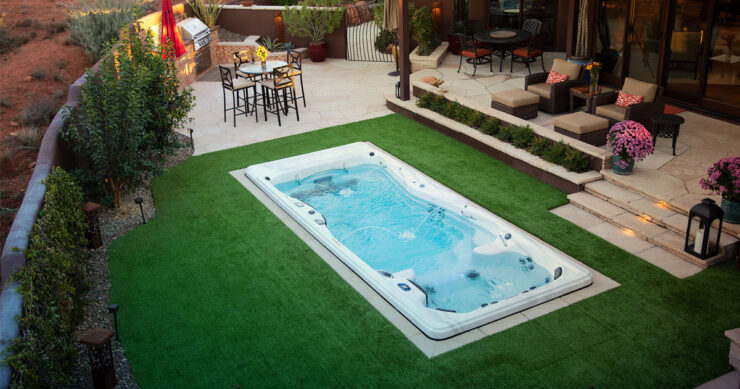Low back pain is a common health issue affecting a significant number of people worldwide. According to the World Health Organization (WHO), approximately 60-70% of people in industrialized countries suffer from low back pain at some point in their lives. It can range from mild to severe, and its causes are diverse, including poor posture, muscle strain, and injury.
One muscle that plays a vital role in low back pain is the psoas muscle. The psoas muscle is a deep-seated muscle that runs from the spine to the thigh bone, and it is responsible for hip flexion and the stabilization of the spine.
Even if you’re not a fitness buff, your psoas muscles are always at work, whether you’re running, dancing, practicing yoga, or simply chilling on the couch. These muscles are essential for connecting your torso and legs, keeping you balanced, and maintaining good posture.
It’s important to keep our low back muscles strong and active to avoid pain and injury down the line. Weak psoas muscles can cause back pain, instability, and reduced mobility, and strengthening them can be an effective way to reduce low back pain.
Experiencing low back pain can make exercising seem daunting and intimidating, and it can be challenging to motivate yourself to start a fitness routine when you’re in discomfort. You might be concerned that exercising will make their pain worse or cause further injury.
Swim spas and water exercise are excellent tools for strengthening the psoas muscle and reducing low back pain.

Low back pain: A common issue
Low back pain is a common problem that can affect anyone, regardless of age or background. It’s a pain in the butt (literally!) that can stop you in your tracks and make daily activities difficult. In fact, it’s so common that most of us will experience low back pain at some point in our lives. Whether it’s from poor posture, an injury, or just sitting for too long, low back pain can affect your overall quality of life.
In the United States, low back pain is the second most common reason for medical visits, and it’s estimated that about 80 percent of Americans will experience low back pain at some point in their lives. And as the population ages, the incidence of low back pain continues to increase, according to the International Association for the Study of Pain.
But the source of low back pain might not be easy to identify. It can be caused by poor posture, muscle strain, and injury. The pain can range from mild to severe.
The psoas muscle, though, can play a role in low back pain. Located in the lower back and extending to the thigh, it is responsible for stabilizing your spine. If the psoas muscle is not strong enough, your spine may lack the support it needs. Additionally, a weak psoas can cause imbalances in other muscles, making them overworked and sore.
How do you know if your low back pain is related to a tight or weak psoas?
Common symptoms of a psoas issue are lower back pain, especially after sitting for a while. You may also notice an increased lower back curve or lordosis, which can cause additional strain on the lower back muscles. Tight hips can also be a sign of a tight psoas muscle, which can cause pain to radiate into the lower back. Additionally, leaning backward can exacerbate lower back pain caused by a tight or weak psoas muscle.
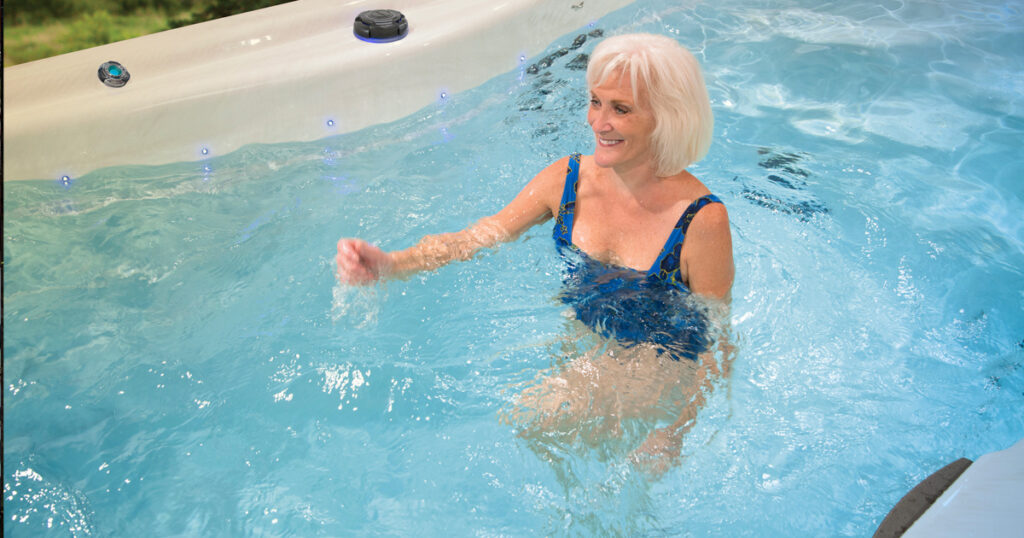
Water exercise for chronic low back pain
Low back pain can affect how you move throughout your day. When you are struggling with that discomfort, you might be afraid to do something to further hurt your back — including exercise.
Many doctors, though, will prescribe movement to ease lower back pain. Why? Exercise is among the few treatments that have been proven to help with back pain. [source] Research has also shown that doing regular activity can reduce the frequency of recurring back pain by almost plfhalf.
If you are stressed that exercise will stress your back, you might want to consider exercising in the water. A low-impact form of movement, water exercise, especially in a Michael Phelps swim spa, can be particularly effective for those with low back pain. It can help reduce pain and inflammation, increase strength and flexibility, and improve overall health and well-being.
Benefits of water exercise for low back pain
Low impact: Water exercise places minimal stress on the spine and other joints. This can be particularly beneficial for those with low back pain, as high-impact activities like running and jumping can exacerbate the condition.
Increased range of motion: Water exercise allows for a greater range of motion than traditional exercises, due to the buoyancy of the water. This can help to improve flexibility and reduce stiffness in the low back, which can be especially beneficial for those with chronic low back pain.
Improved strength and endurance: Water exercise can help to improve overall strength and endurance, which can help to alleviate low back pain. This is because stronger muscles in the back and core can better support the spine and reduce the likelihood of injury or strain.
Reduced pain and inflammation: The hydrostatic pressure of the water can help to reduce pain and inflammation in the low back. This pressure can also help to increase blood flow and promote healing, which can further reduce pain and discomfort.
Improved mental health: Exercise, in general, is known to have numerous mental health benefits, including reducing stress and anxiety. Water exercise is particularly beneficial in this regard, as the calming environment of the water can help to reduce stress and promote relaxation.
Be sure to talk to your doctor or a physical therapist to learn more about how water exercise in a swim spa can benefit you.
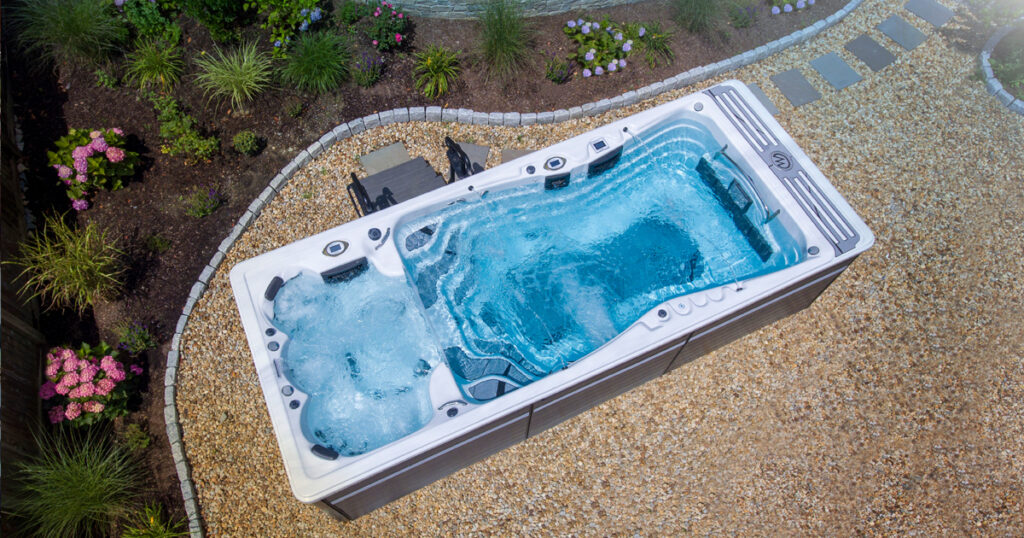
Pool exercise vs a Michael Phelps swim spa
Exercising in water can help you manage low back pain, as well as improve your cardiovascular fitness and build strength. While you can enjoy these benefits in a pool or a swim spa, a Michael Phelps Signature Swim Spa can make water exercise convenient and comfortable.
Have you ever hopped in the local pool and immediately gasped? Most pools are kept at a temperature that’s ideal for swimming — about 82 degrees. Warm water, though, is better for water exercise and aquatic therapy, in particular. You can adjust the water temperature of a Michael Phelps swim spa with just the press of a button. This means you can customize your workout and enjoy warmer water to ease your low back pain.
The gym’s pool is a selling point but a membership doesn’t give you unlimited access. A membership-based pool can have limited hours or close for maintenance. A Michael Phelps swim spa, though, is always available. This can be especially helpful if you have a busy schedule and can’t make it to a public pool during regular operating hours.
When you hop in your swim spa, you can go for a 45-minute swim or try a 15-minute swim spa workout routine. This is a definite benefit if you’re new to water-based exercise or haven’t been active for a while. You can gradually increase the intensity of your workout as you build your strength and endurance by adjusting the current to your fitness level.
And the best part? After your workout, you can enjoy the relaxing benefits of a hot tub and use the jets to target specific muscle groups for a more effective workout than traditional swimming or water aerobics.
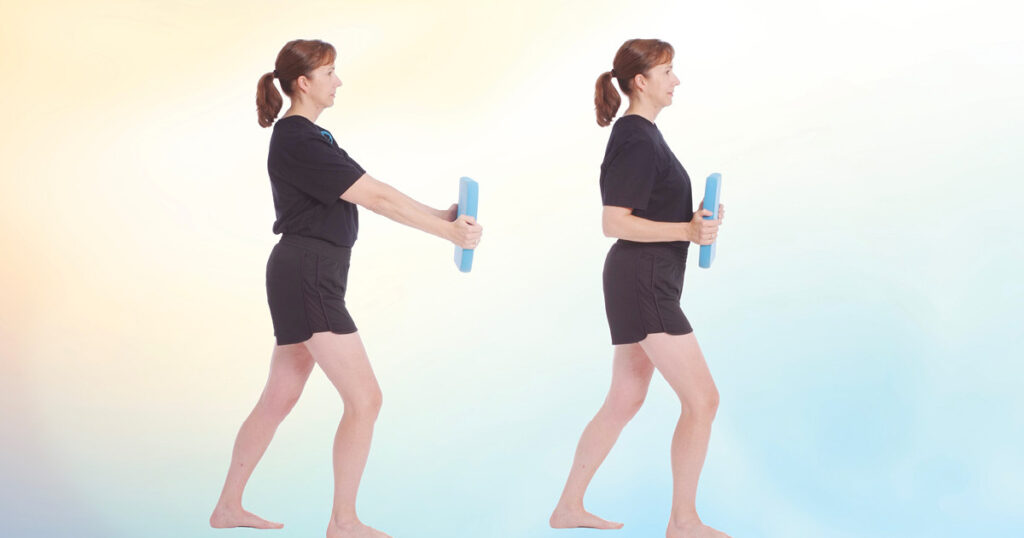
10 aquatic exercises and stretches for your psoas
Whether you are struggling with an injury or want to prevent low back pain, stretching and strengthening your psoas is important. It will make sure that you have the support you need to do the things you love.
There are a variety of exercise modalities that can benefit your back but the water is a gentle way to ease your pains and improve overall health.
These swim spa exercises and stretches will help you release and target the psoas.
Hip extension stretch
With good, tall posture, step one leg out in front of you so that you are in a lunge position. You can hold onto the side of the swim spa for balance. Bend your front leg to go deeper into the lunge and hold for 15 to 30 seconds. Repeat on the other leg.
Hip flexor stretch
Place your hands on your lower back at your waist. Gently bend back and hold, pushing hips forward. Hold this stretch for 15 to 30 seconds.
Knee to chest
Hold onto the side of the swim spa with both hands. Bend your knees and place your feet on the wall of the spa. bent. Sink your bottom toward your heels, tucking your knees into your chest until you feel a stretch in your lower back.
Piriformis walk
Stand tall with good posture. Bring your belly button toward your spine to engage your core. Step forward and bring your ankle toward the opposite knee. Alternate legs as you walk toward the front of the swim spa.
Leg lifts
Stand in the swim spa and lift one leg out to the side and back down. Repeat for 15 to 20 reps, then switch legs and perform the exercise on the other leg.
Single-leg sweep
Lift one leg forward in front of your body, keeping it as straight as possible. Pause briefly and then kick your extended leg behind you. Repeat on the other side.
Flutter kicking
Float on your stomach and hold your head above the water. Grab onto the stainless steel bar of the swim spa and let your legs float back. Begin to kick your legs. Try to kick at a steady tempo that doesn’t tire you out too quickly.
Open-arm core rotations
Stand with feet shoulder-width apart, head straight and arms out from sides in line with ears. Engage core and rotate body using hips from one side to the other. Repeat. You can use aquatic dumbbells to increase the resistance of the water.
Seated bicycling
Sit in the hydrotherapy end of the swim spa. Be sure to maintain an upright posture. Perform a bicycling motion with your legs for 30 seconds to a minute.
Bell passes
Stand with feet shoulder-width apart and knees slightly bent. Hold a single aquatic dumbbell in one hand. Your arms should be out at your sides. Keep elbows straight while bringing the dumbbell in front of you. Pass the dumbbell to the other hand and return to the starting position. Repeat sequence. Be sure to keep your core engaged and do not rock your body.
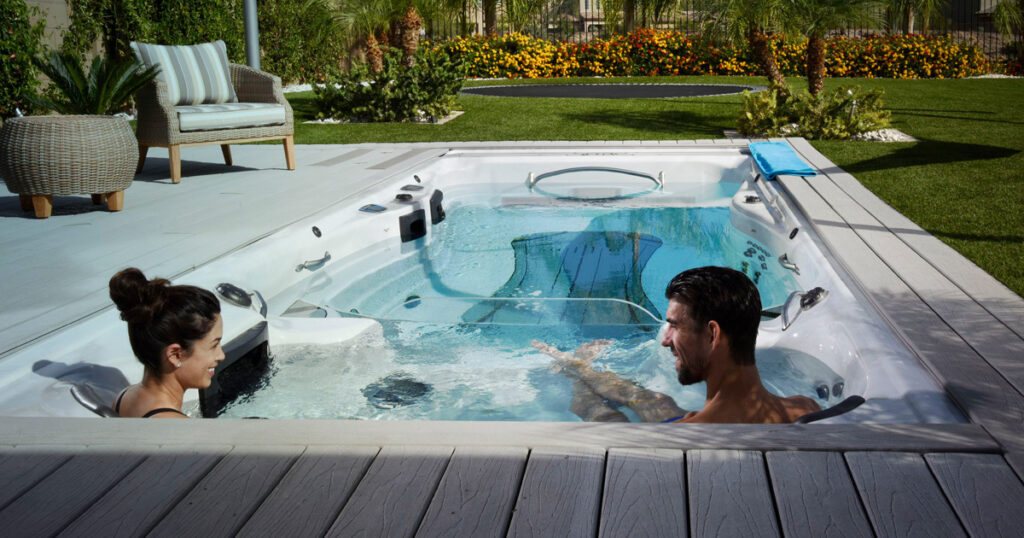
How to buy a swim spa
Do you want to be able to swim, exercise, and relax at home? Having a Michael Phelps Signature Swim Spa allows you to swim on your schedule while adding a fun factor to your backyard. You can click here to find out more about the benefits of hydrotherapy and relaxing in a hot tub. Or, contact your local Master Spas retailer to learn more about swim spa ownership. Wondering how much a swim spa costs? You can request a quote here.

